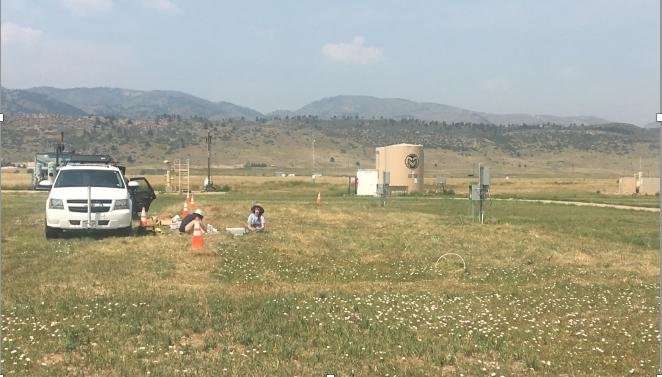UTA researcher working to improve response to gas-emission incidents

Nearly 2 million miles of natural gas pipelines crisscross the United States, most buried underground, and some of those pipes develop leaks and allow gas to escape. As evidenced by several recent high-profile incidents, these leaks may lead to catastrophe.
Kathleen Smits, an associate professor in the Civil Engineering Department at The University of Texas at Arlington, recently received a $414,000 grant from the Pipeline and Hazardous Materials Safety Administration to develop a method to predict the conditions under which gas migration may occur and establish best practices to improve response to gas migration incidents, and finding and fixing leaks.
She will lead a team of researchers at Colorado State University and UTA in collaboration with state agencies such as the Texas Railroad Commission and the Colorado Oil and Gas Conservation Commission, and industry partners including pipeline operators and service providers.
When a pipe develops a leak underground the gas generally doesn't rise straight up from the leak site. Rather, it disperses in different directions depending on the type of soil, temperature, pressure and other factors. Eventually, it rises to the surface, but it may not be anywhere near the leak and the levels of gas in the atmosphere where it comes out at another location are often not detectable with current instruments, even though large pockets of gas may still be trapped underground. This migration and difficulty in detection costs time in finding and repairing the leak. It also may lead to greater danger as the gas continues to build up.
Smits and her colleague, Dan Zimmerle of Colorado State University, created a pipeline test bed as part of the Methane Emissions and Technology Evaluation Center or METEC that allows them to control the pipeline leakage rate, subsurface conditions, moisture, surface conditions and other factors, and use sensors to monitor how gas moves underground and how it acts once it reaches the surface. Using the data collected, the team has created a data set that can predict how gas will act under specific subsurface and atmospheric conditions. Smits is now working to apply this modeling to create an algorithm that can be applied in the field by industry leak first responders.
"Our research shows interesting results that go against the conventional wisdom that if there's a large leak you'll be able to see it or easily detect it aboveground. In fact, we have found that the concentrations of gas in the atmosphere are often very small in comparison to the size of the leak," Smits said.
"The methods being used today to detect natural gas leaks from pipelines are flawed because most of the technologies are not sensitive enough, the methods aren't consistent enough, and there's a general denial that there's a problem. We're hoping that by providing data-based guidelines for industry first responders that allow them to take all of the environmental and geological factors into account at a potential leak site, leaks will be detected and repaired before they become a larger problem."
Once Smits completes her algorithm, she and her team will accompany first responders from five industry leaders to leak sites to test whether their modeling works and get the industry on board with the new guidelines.
"It's important for oil and gas companies to show that they're trying to get a handle on the problem. With so many pipelines and aging infrastructure, leaks are inevitable. Companies need to be able to reassure their customers and communities that they are able to detect and repair leaks effectively to ensure safety," Smits said.
Smits' research is an example of data-driven discovery, one of four themes of UTA's Strategic Plan 2020, said Ali Abolmaali, chair of the Civil Engineering Department.
"Natural gas has led to several deadly explosions in the past few years that could have potentially been avoided if there was a better understanding of how gas acts when it leaks from a pipe and how to better detect it. Dr. Smits and her team have done excellent work in their research, and in getting cooperation from industry to apply their findings in a way that could save lives and property," Abolmaali said.
Provided by University of Texas at Arlington